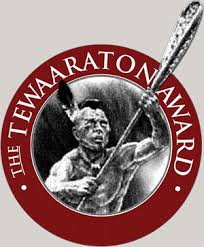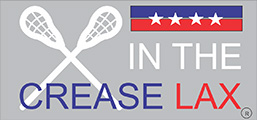
By Todd Carton –
About two years ago when I wrote about my visit to Sarajevo I called it, “among the most heartbreaking and heartwarming places you will ever visit.” Heartwarming and heartbreaking. These were the first to words that came to mind at the 2018 Tewaaraton Awards Ceremony at the Smithsonian National Museum of the American Indian on the last night in May. And as has happened in the past, the emotional crest of the evening came not with the presentation to the award winners.
Every year, the ceremony makes clear that the award, given to the honor the nation’s best Division I men’s and women’s college players, and more importantly, the sport of lacrosse is much bigger than the game of lacrosse. The Six Nations of the Iroquois Confederacy – Mohawk, Oneida, Onondaga, Seneca, Tuscarora and Cayuga – call the sport “a gift from the creator.”
Every year, the attendees see videos explaining how the tribes used the game not just to train their warriors but at time used it to settle disputes and even used it as a means of prayer.
Every year, the ceremony begins with an opening honoring the traditions of one of the six First Peoples tribes. In 2018, Sachem Sam George made this presentation that is intended to align the minds and spirits of those in attendance as a representative of the Cayuga. The English translation reads:
“Now the time has come
Our ancestors have laid this responsibility down, for me to speak about this matter.
So now it is. I will carry my words as far as I am able.
Let your minds be long (Have patience) with these words.
So now we have reached the end of our words.
I have carried out this task, of bringing our minds together and giving thanks, to the fullest extent of my abilities. Nothing was meant to be forgotten.
So it is, we will continue to be thankful. Now our minds are one.”
Heartwarming to those whose hearts are not stone.
Before running through the administrative details – thanking the University Club, the Tewaaraton Foundation board members, the selection committees and the like – this year’s ceremony began with a quiet moment honoring Dick Edell who died on May second. While Edell clearly touched the lives of nearly everyone associated with the sport, the honor was particularly poignant for fans of the University of Maryland where Edell coached from 1984 through 2001.
The first awards given are the 2018 Native American Scholarships presented by US Lacrosse to one female and one male graduating high school senior of Haudenosaunee/Iroquois heritage who “exemplify high character, leadership and academics both on and off the lacrosse field.” This year’s winners were Ivy Santana and Lyle Warrior both citizens of the Seneca Nation.
The presentation of the Tewaaraton Legends Award follows. The award is given to one man, and beginning in 2016, one woman who would have won the award but whose playing career predates the presentation of the first award in 2001. This year’s winners were Temple star and current University of Florida head coach Mandee Moore O’Leary and Johns Hopkins goalie Larry Quinn – one of only three goalies to be named National Player of the Year.
The third presentation is the Spirit of Tewaaraton. This is given to “an individual involved in the sport of lacrosse, who nobly reflects the finest virtues exemplified in the game, and who, over the course of his or her life, has made a significant contribution to society and to the lives of others.” The 2018 Spirit of Tewaaraton honoree was Welles Crowther who became known as “The Man in the Red Bandana.”
For those of you unfamiliar with his story, Crowther grew up in Nyack, New York and played lacrosse for Boston College until his graduation in 1999. An equities trader for Sandler, O’Neill & Partners, Crowther was in his office on the 104th floor of the South Tower of the World Trade Center on September 11, 2001 when the plane flew into the tower.
As a volunteer who was a full member of the Empire Hook & Ladder Co., No. 1 in his hometown of Nyack, Crowther drew on his training and calmly led at least a dozen people down the 104 flights of stairs getting them to safety before returning to see if he could assist anyone else.
Searchers found his body on March 19, 2002 alongside firefighters and other emergency workers. Little was known of his heroic efforts until his mother Allison read Judy Wein’s firsthand account in the New York Times of the actions of the man in the red bandana. Crowther’s father Jefferson had given Welles a red bandana when he was six years old and Welles carried it with him every day thereafter. Allison met with Wein and other survivors and confirmed that Welles had, indeed, been the man in the red bandana. Hearts broken.
So unique was Crowther’s sacrifice that the Tewaaraton foundation commissioned renowned Onondaga potter and sculptor Peter B. Jones to create a unique trophy to honor him. This special trophy was presented to his parents.
For me, as has happened at past Tewaaraton Awards ceremonies, the presentation of the current year award seemed somewhat anti-climactic. However, it did end the evening on an upbeat note. Sam Apuzzo of Boston College won the women’s award ending a string of six consecutive wins by Maryland players and Yale’s Ben Reeves won the award after leading the Bulldogs to their first NCAA Championship. Both are the first players from their respective universities to win the Tewaaraton Award.

Leave a Reply